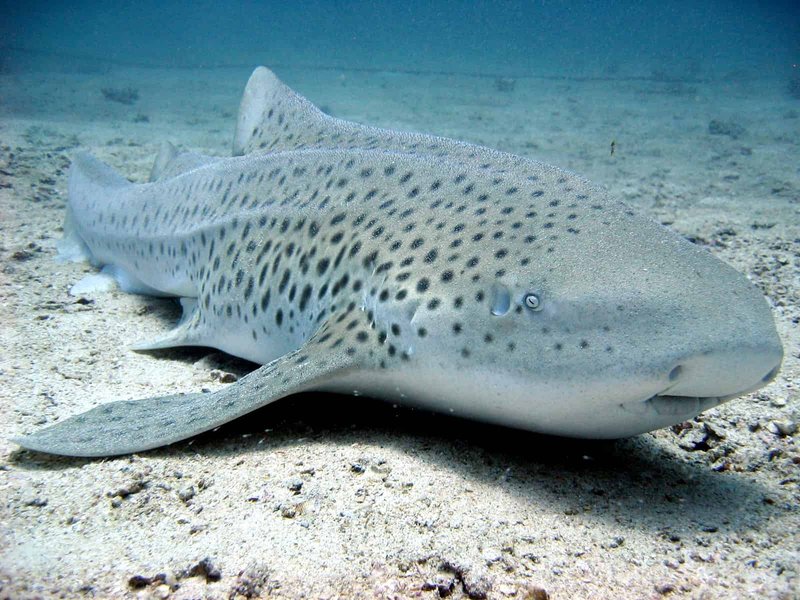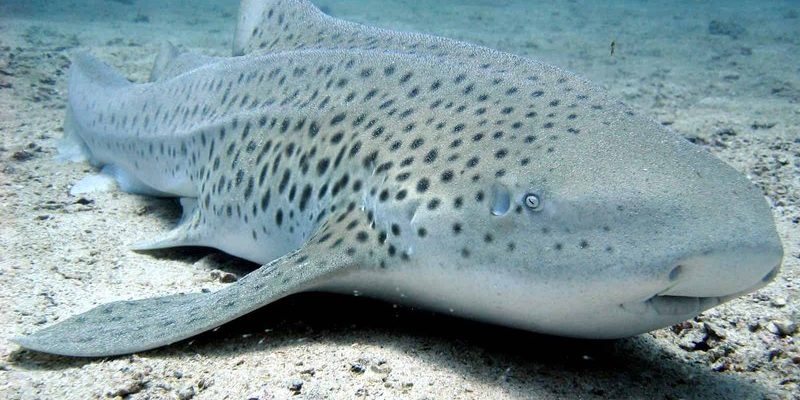
Zebra sharks, or *Stegostoma fasciatum*, aren’t just pretty faces in the ocean; they play an important role in maintaining healthy marine ecosystems. Understanding their natural habitat helps us appreciate their place in our oceans and informs efforts to conserve them. So, grab your metaphorical snorkel gear as we explore where these incredible sharks can be found!
What Are Zebra Sharks?
Before we dive into their habitats, let’s clarify what zebra sharks are. As I mentioned, they’re named for their distinctive patterns. When they’re young, they sport bold stripes, which gradually develop into spots as they mature. This transition is a bit like changing outfits as you grow up!
Zebra sharks typically reach about 10-11 feet long, although some can grow even larger. Unlike your typical idea of a shark, these creatures are quite gentle. They prefer to feed on small fish, mollusks, and crustaceans, making them a delight to watch if you’re lucky enough to see one in the wild.
Their nature also makes them somewhat sluggish. You might spot them resting on the ocean floor during the day, often hiding among rocks or coral. This behavior makes them unique in a world where many sharks are constantly on the move.
Coastal Regions: The Zebra Shark’s Favorite Home
Zebra sharks are primarily found in *shallow coastal waters* across the Indo-Pacific region. These areas are like their comfort zones—think of it as their local café where they feel at home.
You can find zebra sharks in places like the Great Barrier Reef, the waters around Indonesia, and the Philippines. These regions are teeming with life, and zebra sharks thrive among colorful coral reefs. The warm waters of these ecosystems provide the right conditions for their growth and feeding—it’s like a buffet set just for them.
Here’s the thing: these sharks prefer sandy or muddy bottoms, where they can easily hide and ambush their prey. So, when you imagine a zebra shark lounging in the sun, think of it resting on a sandy ocean floor, camouflaged against predators while it waits for its next meal.
Coral Reefs: A Vibrant Playground
Coral reefs are a significant part of a zebra shark’s habitat. You might be wondering why? Well, coral reefs act like bustling cities of the ocean, brimming with life and providing plenty of food sources.
In these vibrant ecosystems, zebra sharks often hunt for small fish, crustaceans, and mollusks that inhabit the nooks and crannies of the coral. Think of it as an all-you-can-eat buffet! The reefs also offer plenty of hiding spots, making them perfect for these sharks to rest during the day.
However, it’s worth noting that coral reefs are in danger due to climate change, pollution, and other human activities. Protecting these ecosystems is crucial for ensuring zebra sharks and countless other marine species can continue to thrive.
Sea Grass Beds: Another Special Place
You might not have heard of sea grass beds, but they’re another important habitat for zebra sharks. These underwater meadows play a vital role in coastal ecosystems, serving as a nursery for many marine animals, including young zebra sharks.
Sea grass beds help stabilize the ocean floor and provide shelter and food for various marine species. Zebra sharks can often be found lounging in these areas, where they hunt for small invertebrates hiding among the grasses.
Additionally, they contribute to the health of these ecosystems by helping to control the population of certain prey species. It’s a win-win situation for both the zebra sharks and the sea grass beds!
Behavior and Adaptations to Different Habitats
Zebra sharks have a few quirks that help them thrive in their habitats, which might seem a little unusual compared to other sharks. For one, they’re nocturnal, meaning they prefer to hunt at night. This behavior allows them to avoid competition with other predators and reduce the chances of being hunted themselves.
Their flattened bodies and long pectoral fins make them agile swimmers in shallow waters. Imagine how graceful they must look gliding through the coral! They also possess a keen sense of smell, allowing them to locate food even in murky waters.
One cool adaptation is their ability to breathe while resting on the ocean floor. Unlike many other sharks that must constantly swim to keep water flowing over their gills, zebra sharks can pump water through their gills while they lie still. This ability allows them to conserve energy while they wait for the perfect meal to swim by.
Where Else Can You Find Zebra Sharks?
While the Indo-Pacific region is their primary habitat, zebra sharks have been spotted in other areas, often in aquariums or marine sanctuaries. These settings provide a chance for people to learn about and appreciate these unique sharks without directly affecting their natural habitats.
Zoos and aquariums around the world sometimes feature zebra sharks in their exhibits. This setup allows visitors to observe their behavior up close, contributing to conservation and awareness efforts. It’s one way we can ensure that zebra sharks continue to thrive in the wild, as education often leads to action in protecting marine life.
The Importance of Conservation
Sadly, zebra sharks face threats from overfishing, habitat destruction, and climate change. Their populations are declining, and conservation efforts are crucial. Protecting their natural habitats, like coral reefs and sea grass beds, is vital for their survival.
You can do your part by supporting organizations that focus on marine conservation or spreading the word about the importance of protecting these stunning creatures. Remember, every bit helps in maintaining the health of our oceans and the incredible life within them.
In conclusion, zebra sharks are fascinating creatures that call the warm coastal waters of the Indo-Pacific region their home. From the vibrant coral reefs to the nurturing sea grass beds, these habitats offer everything they need to thrive. Protecting these environments is essential, not just for zebra sharks but for the entire marine ecosystem. Let’s appreciate and cherish these unique sharks as vital parts of our ocean world.

